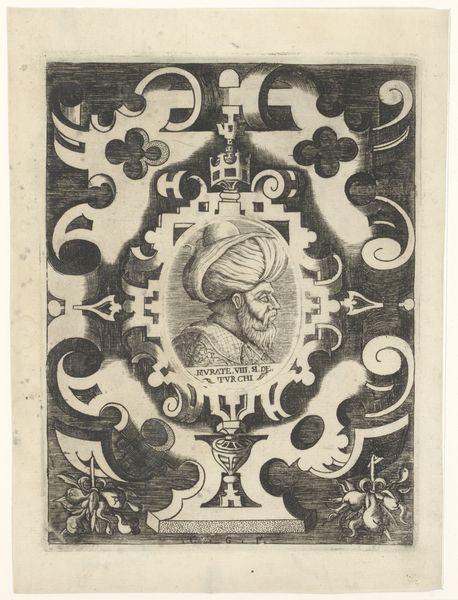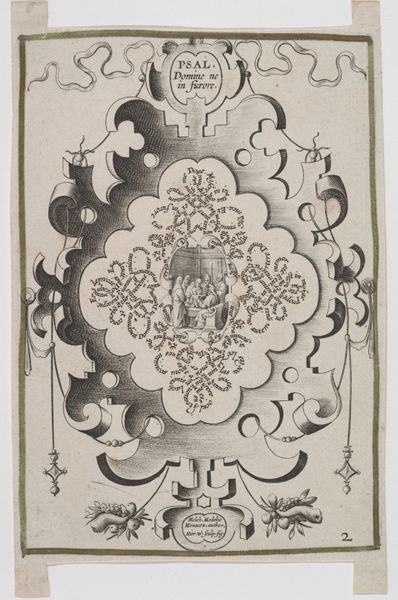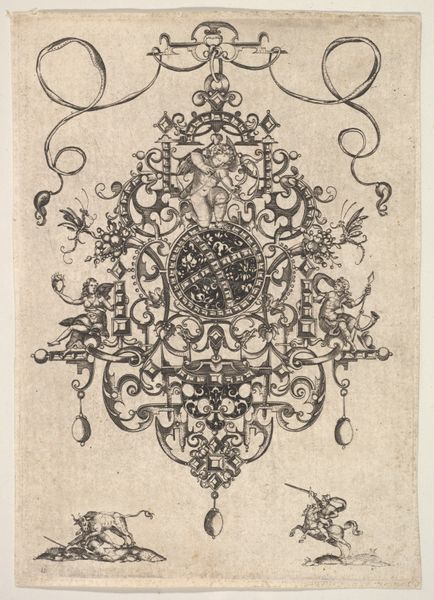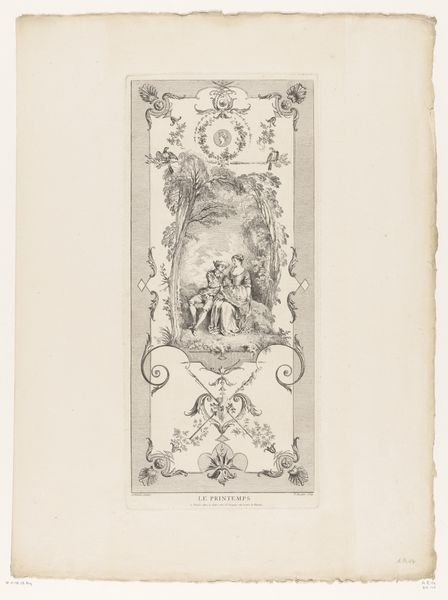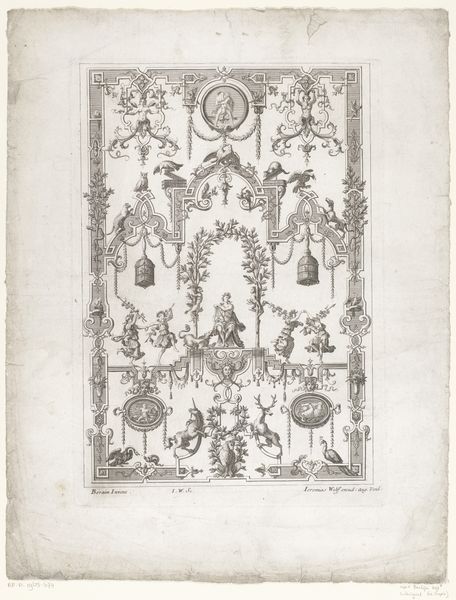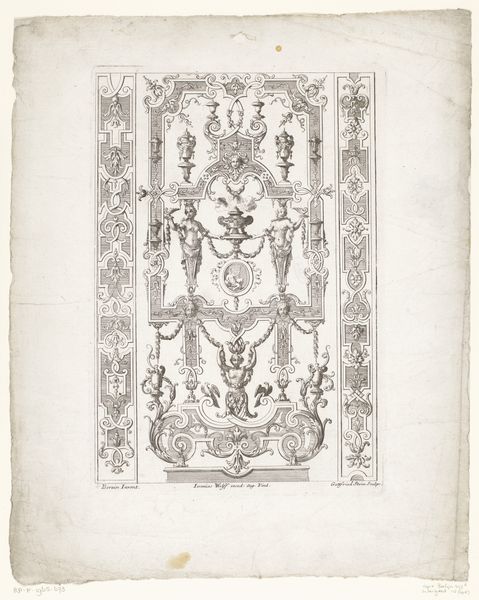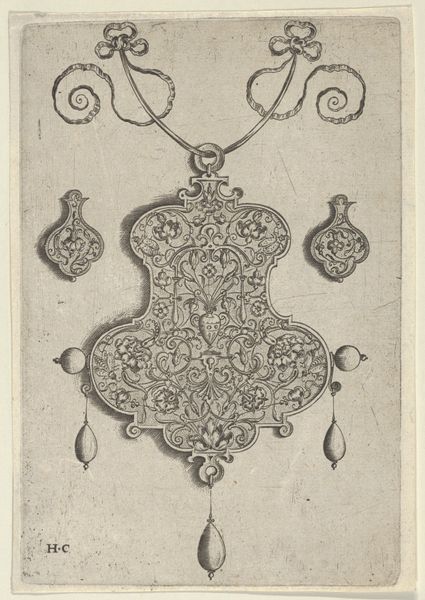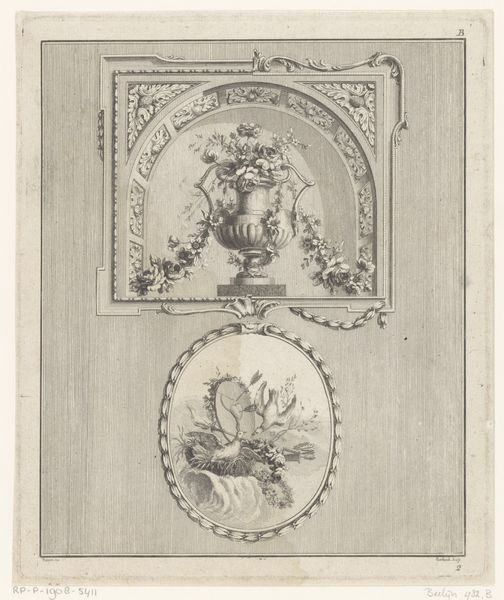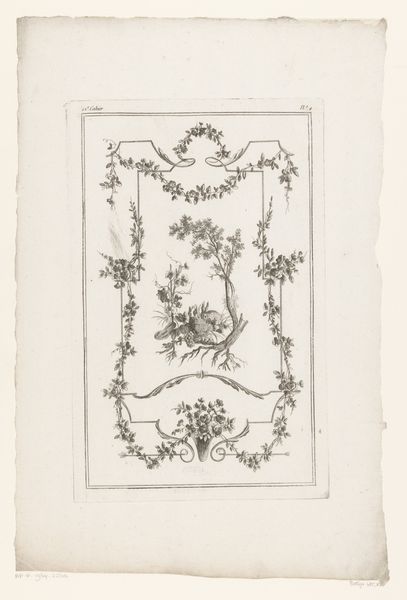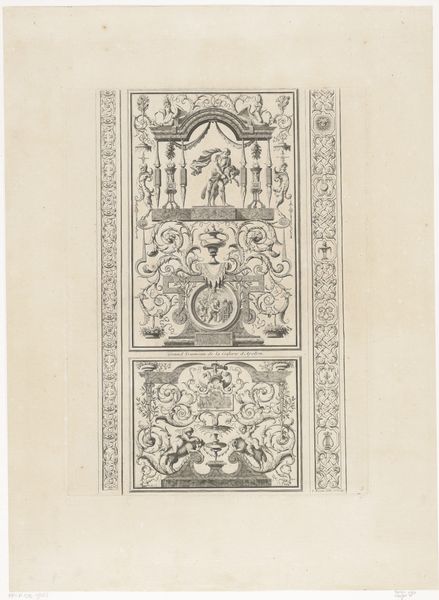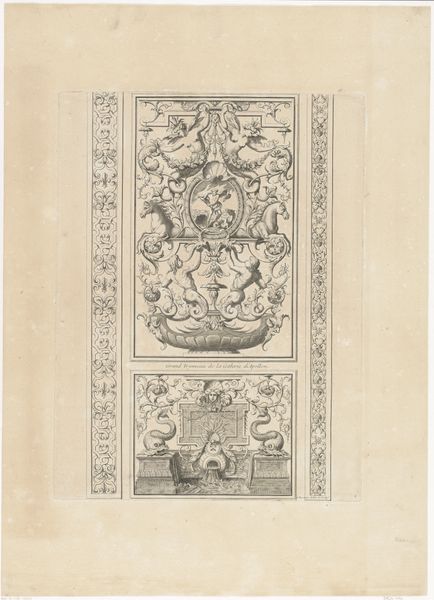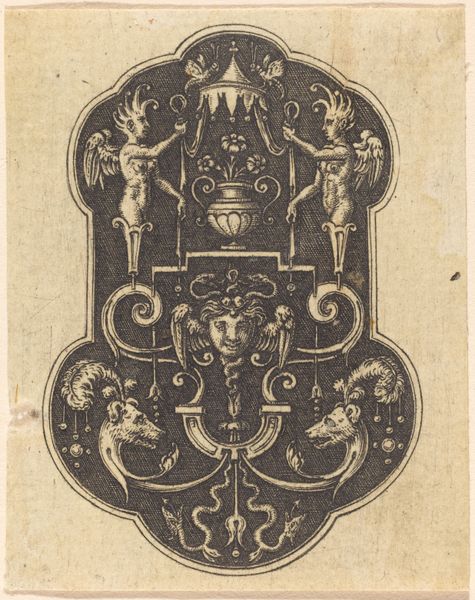
drawing, graphic-art, print, etching
#
drawing
#
graphic-art
# print
#
etching
#
etching
#
11_renaissance
Dimensions: sheet: 8 7/16 x 6 11/16 in. (21.5 x 17 cm) plate: 7 1/2 x 5 1/2 in. (19 x 13.9 cm)
Copyright: Public Domain
Curator: Hans Vredeman de Vries gives us this ornamental print called "Diamond-shaped Cartouche," which was made sometime between 1547 and 1606 using etching. It's currently held at the Metropolitan Museum of Art. Editor: What strikes me is how bizarre and wonderful the composition is—it’s almost theatrical, a little stage set for something fantastical. Curator: It's a design for an ornamental frame, see. Something that would be incorporated into larger architectural projects. It’s meant to be a reusable design! Editor: Reusable like clip art, almost. I notice the classical motifs reworked in such a strange way—there are grotesque masks, these little cherubic faces…It seems to echo a tension between classicism and the burgeoning Baroque sensibility. Curator: It's the Dutch Renaissance filtered through de Vries’s imagination. His interest was less on pure, unadulterated classical form, and more in invention. What kind of expressive possibilities can be found? Editor: It is decorative in the extreme, almost decadently so. It's also interesting how gender is represented: this stern, masculine grotesque, balanced by the calmer feminine figure down below. There's something here about the ways ornament itself, and perhaps the very act of artistic invention, gets coded along gendered lines. Curator: I like to think of these not just as pretty things but as solutions to compositional problems—they’re visual recipes, of sorts. They teach us ways of arranging elements. Look at the way de Vries frames our focus, drawing our eye inward toward the emptiness. Editor: An emptiness that almost mocks the lavish excess around it! What’s *meant* to go in the center? Is it that the possibilities of decoration are ultimately meaningless if divorced from…well, from the people the decoration is intended to serve? I’m being harsh, I know, but still! Curator: The frame would find a purpose when it finds a building—or maybe in one of de Vries's own drawings, recontextualizing its intent. It waits there. Editor: The space of possibility then. Which…I suppose is really the only purpose any artwork truly needs, isn't it?
Comments
No comments
Be the first to comment and join the conversation on the ultimate creative platform.

